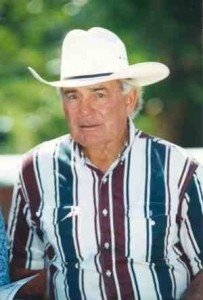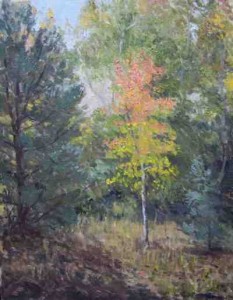Essay by John Mattingly
Agriculture – November 2006 – Colorado Central Magazine
DRIVE ACROSS the Great Plains and Midwest of the United States in summer, and you’ll notice a vast quilt of wheat, corn, and soybeans, their tidy rows stitching fencerow to fencerow, from eastern Colorado through Ohio. Every thirty miles or so, white silos and gray, steaming feedmills rise up on the horizon like bountiful cathedrals, towering over short Main Streets where cafes with names like Rear O’ The Steer and Fillin’ Station are surrounded by glinting new pickups next to the Supreme Court Motel.
On the way out of town you pass the implement dealership inhabited with a squatting rainbow of giant ground-working tools, the Farmer’s COOP with neat rows of anhydrous ammonia tanks lined up like obedient bomb casings, and finally the Farm Service Center, a growers’ supermarket of fertilizers and chemicals. This is the heartland, the nation’s bread basket, where you will likely see an occasional hand-painted sign on a fencepost declaring: I FEED YOU AND 149 LIKE YOU. You get the feeling that this is a place where, at a minimum, nobody goes to bed without dinner.
But something is missing. For all the abundance of productivity — for all the tidy fields growing right up to the edge of town, for all the elevators and mills spewing dust and steam, and for all the sophisticated machines — there is a notable absence of human activity in the fields. This is partly because farmland is open space, and in terms of calorie creation, the sun does most of the work. So it isn’t terribly startling that corn plants per square mile outnumber humans on average ten million to one.
Yet, the heartland fields, as well as much of our national cropland regions, feel a bit like vacant lots: relatively quiet spaces skirted by economies of more or less vigor. You seldom see a farmer at work. Which is a bit odd. You’d think a farmer who feeds so many people would be more visible, if for no other reason than to take an occasional bow to passers-by for working the long, hard hours we associate with this prolific profession.
You might see a tractor or combine chugging away in a field once in a while, or pass a farmer’s wagon or machine on the road, but given the vast expanse of growing crops, you would expect to see a lot more human activity. But you don’t. In fact, it isn’t the human bodies you feel have gone missing, it’s the farmer’s brain: it’s at the implement dealer, the COOP and the Farm Service Center.
You may not fret about this loss to the extent I do as a retired farmer who would like to see more of his cohorts engaged in intelligent action. An old farmer once told me that my footprint made a deeper impression on a growing crop than my tractor tires, which is advice I took to heart, but which doesn’t seem to be inspiring young farmers today. To explain why farmer absenteeism among growing crops disturbs me, I offer the following:
1. While statistics can be hatched showing one farmer feeds something like 150 people, this is a lie of omission. Today’s farmers may be only 2% percent of the national population, but fully 25% of the national population supports that lone farmer in some way or other — from the miner who dug the ore that made the steel that made a tractor, to the secretary at the grain elevator who typed a commodity check.
A big team of players is still in the farming game, even though a lot of members are not in the field; they’re on the sidelines, out of the nasty fray with nature, holding down jobs with regular hours, health care, and (hopefully) a pension. Part of the reason croplands feel like a vacant lot is that many of the key players are in town. Without them, the modern U.S. farmer would be hard pressed to feed even himself.
AS RECENTLY AS 40 years ago when I started farming, my colleagues were more autonomous. We saved our own seed stock from selected corn, pinto bean, alfalfa, barley, and wheat plants. We fertilized sparingly through systems of rotation, fallow, and animal manures from our small livestock feeding operations. We farmed with comparatively primitive machines and used few chemicals to control pests. Rather than making a statement about the surpluses on our balance sheet, we bought a new pickup once in a lifetime and lived in plain homes designed to protect us from the elements
I recall one of my first neighbors making a special trip over to see me after a year of good bean yields. “Don’t build yourself a new house, my boy,” he said, shaking his head. “I’ve seen it too many times: a young farmer has his first good year, builds himself a nice big house to tell everybody about it. Next year he’s broke.”
2. That farmers went from autonomy and self-reliance to absenteeism and dependence is evident in the texture of U.S. cropland today contrasted with 40 years ago. In the ’60s and early ’70s, instead of the fencerow to fencerow monocultures you see today, you would have noticed a fallow patch in most fields adjacent to the growing crop, and you would have seen smaller fields with greater crop variety, such as pastures, grazed by cattle, sheep, and hogs. You would also have seen more farmers out working, mostly on small, cabless tractors, perhaps shaded by an umbrella, the farmer swatting now and again at flies with his hat.
This previous low-tech pattern of fallow, variety, and grass derived largely from government policy. From the New Deal through to the Nixon administration, U.S. agricultural policy was driven by memories of the Depression and post WWII crop gluts, and therefore it aimed at preventing overproduction. To qualify for government payments, a farmer had to set aside up to 20% of his Crop Base, which represented the ground on his farm that had an historical record of producing that crop. Also, many acres were in the Soil Bank, a program that modestly compensated a farmer for setting aside an entire farm.
CITIZENS SCOFFED at the idea of paying farmers to produce less, but the policy worked. The old-fashioned family farm survived the depression and beyond, and Americans learned about crop rotation, soil conservation, and other rudimentary environmental practices.
In 1973, however, the first oil embargo collided with the U.S. economy, causing oil to reach $12 a barrel, from a previous high of roughly $1 a barrel. Fear of shortages, and a craving for fundamental goods, caused a flight of capital to commodities: corn, beans, hogs, sugar, and others rose to high levels, not seen since. I saw pinto beans hit $60 a hundred, when their prior high had been around $10; wheat went to almost $6 a bushel, from a previous trading realm of about $2, corn bounced near $4 a bushel, up from a usual $1.50, while soybeans crested over $10 a bushel, a price not seen since — even in inflated dollars.
Earl Butz, then secretary of agriculture (fresh from a stint on the board of Purina) was pressed by Nixon to respond to the politically sensitive, and utterly preposterous fact that Americans were now spending too much money at the grocery store. Butz pointed to current ag policy as the culprit. The government had no business paying farmers to restrain production when there was obvious demand for their products.
In 1974, the Nixon administration reversed its policy of acreage restraints to a policy that stimulated production through the mechanism of price supports. Each major commodity received a target price, and at the end of the season, if the actual market price was less than the target, the farmer received a “deficiency payment.” A farmer could plant fencerow to fencerow, and if this resulted in surpluses and depressed prices, no matter. If corn tumbled to $1.50 a bushel at harvest and the target price was $2.30 a bushel, the farmer received a check for 80 cents a bushel on his crop base from The Program. Over the years, there have been operational twists and turns in this policy too numerous to discuss in detail, but The Program’s basic rationale of encouraging production through price supports has not changed.
Politicians and consumers embraced this concept for bringing down the cost of food, now referring to farmers as Great American Farmers, who, loosed from the inefficient chains of old government policy, were more than competent to feed this country, if not the world. And most farmers, who habitually cursed Uncle Sam for all the wrong reasons, often spoke up in trade magazines of the time, declaring it was “great to get the government out of farming.”
Bull butter. Prices returned to normal, setting the plate for the government to become a larger presence than ever in the farming business. Based on a single, jolting event — the oil embargo of 1973 — the federal government set the course for ag policy to the present day, a policy that stimulated rather than restrained production by guaranteeing farmers a price floor on key commodities.
PRICE SUPPORTS encouraged farmers to grow huge amounts of certain key commodities, and eventually pushed American farms firmly into our modern industrial production system — as more and more farmers ditched their hogs and chickens, bought more acreage, applied more fertilizers and pesticides, and borrowed more money in order to invest in bigger, better and more farm equipment to increase their yields.
In a matter of years, this led to fewer and fewer farmers employing more and more technology supplied by a bigger and bigger host of industrial assistants.
Significantly, this resulted in mountains of annual surpluses, mainly of corn and soybeans. The piles had to go somewhere, and that’s why, as discussed in last month’s essay, over half the SKU’s (stock keeping units) in a typical U.S. food store — from beef to Twinkies — are an industrial sausage of cheap, essentially government subsidized, corn and soybeans.
Apart from today’s lightly funded Conservation Reserve Program, U.S. farmers are in fact being paid to create an abundance of cheap calories for industrial processors. And anyone who says, “I hate to see them paying farmers not to produce,” has his head stuck in the Butz hole of ag policy.
John Mattingly farmed for many years in Colorado, most recently near Moffat where he grew canola seed.


